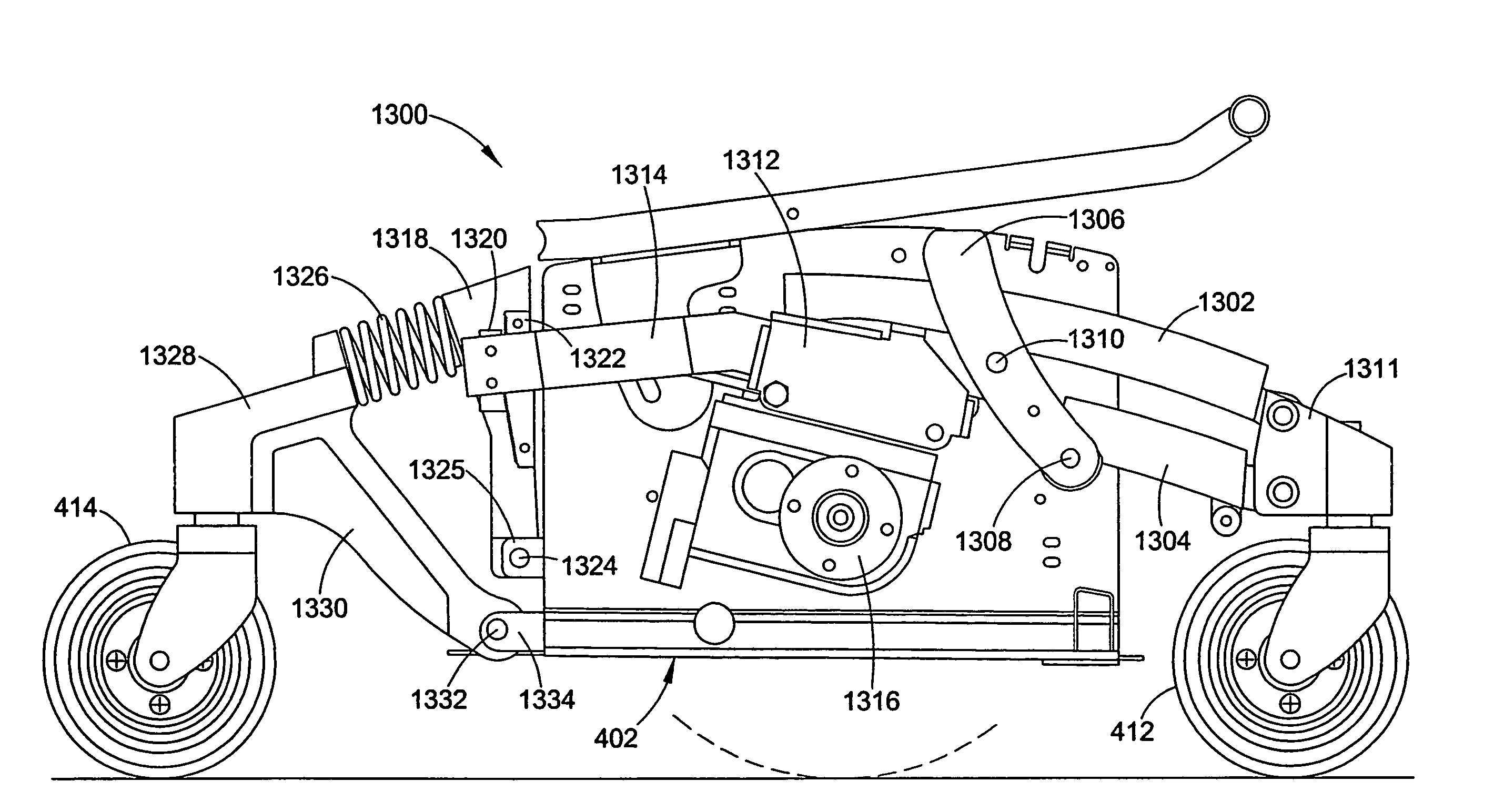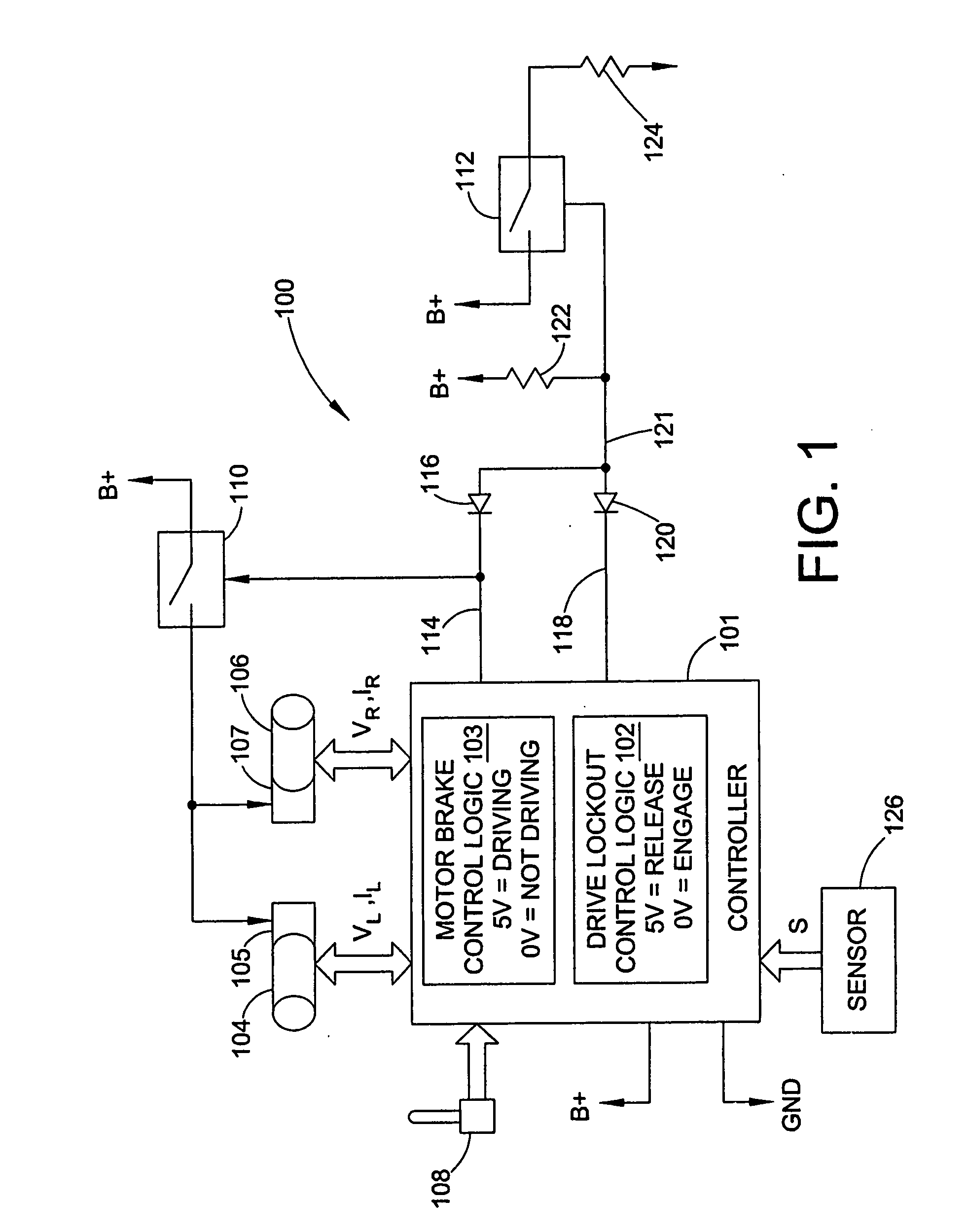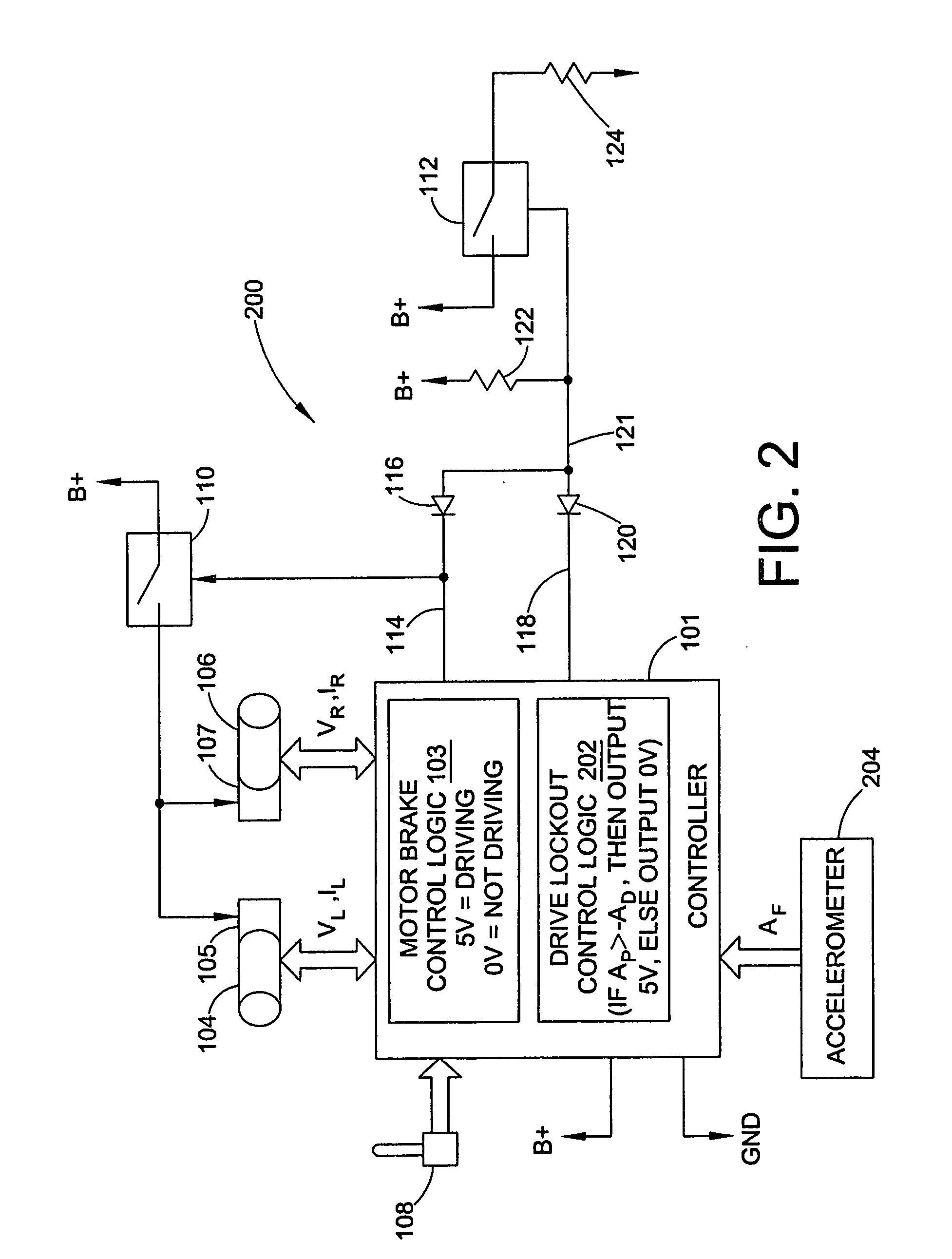Suspension for wheeled vehicles
a technology for suspension and wheels, applied in the field of suspension for wheeled vehicles, can solve the problems of hampering the wheelchair's ability to climb over obstacles, and limiting the degree of independen
- Summary
- Abstract
- Description
- Claims
- Application Information
AI Technical Summary
Benefits of technology
Problems solved by technology
Method used
Image
Examples
embodiment 500
[0045] Illustrated in FIG. 5 is another alternate embodiment 500 to that FIG. 4. The embodiments of FIG. 4 and 5 are substantially similar, except that the embodiment of FIG. 5 includes only one locking member 420 that is associated with both pivot arms 404 and 510. To facilitate this configuration, a link 502 is provided between the pivot arms 404 and 510. Link 502 has a first portion 504 that is pivotally connected to first pivot arm 404 and a second portion 506 that is pivotally connected to second pivot arm 510. Link 502 also has a third portion that is pivotally connected to a bottom portion of locking member 420. A top portion of locking member 420 is pivotally connected to frame 402. Though not illustrated, a push-pull cable mechanically links locking member 420 to rear caster 414 or its parallel equivalent in the same fashion as that shown in FIG. 4. The operation of embodiment 500 is similar to that described for FIG. 4, except that when locking member 420 is in the locked ...
embodiment 600
[0046] Referring now to FIGS. 6A and 6B, an embodiment 600 of a stabilization system having ratchet-type locking member or assembly 602 is shown. The locking member 602 has a pawl member 614, ratchet member 620, and a solenoid actuator 608. Pawl member 614 and solenoid actuator 608 are rigidly fixed to frame 402 via a bracket 606. Bracket 606 also serves as a guide bracket for ratchet member 620, though this function can be provided by a separate guide member. Solenoid actuator 608 has a coil 124, spring 612 and pin 613. Pawl member 614 has a first portion pivotally connected to bracket 606 and a second portion pivotally connected to pin 613. Ratchet member 620 has a plurality of cammed extensions 622 between which pawl member 614 is configured to engage and disengage. A bottom portion of ratchet member 620 is pivotally connected to pivot arm 404 at connection 604. So configured, ratchet member 620 is free to undergo reciprocating movement within the guide portion of bracket 606 as ...
embodiment 700
[0048] Referring now to FIGS. 7A and 7B, an embodiment 700 of a stabilization system having a caliper-type locking member or assembly 702 is shown. The locking member 702 has a spring 712, pin 714, one or more friction plates 710, and a linear reciprocating link 704. Pin 714 has a first portion connected to friction plate 710 and a second portion connected to either a solenoid actuator or push-pull cable, or equivalent, as described earlier for locking and unlocking the suspension system. Spring 712 is located between these portions and biases pin 714 and friction plate 710 toward link 704. The friction plates 710, spring 712, and pin 714 are housed within a frame attachment 708, which rigidly connects these components to frame 402. Attachment 708 also functions as a guide for link 704 so as to always maintain link 704 between friction plates 710. This function can also be provided by a separate guide bracket.
[0049] Link 704 has a first portion that is pivotally connected to pivot a...
PUM
 Login to View More
Login to View More Abstract
Description
Claims
Application Information
 Login to View More
Login to View More - R&D
- Intellectual Property
- Life Sciences
- Materials
- Tech Scout
- Unparalleled Data Quality
- Higher Quality Content
- 60% Fewer Hallucinations
Browse by: Latest US Patents, China's latest patents, Technical Efficacy Thesaurus, Application Domain, Technology Topic, Popular Technical Reports.
© 2025 PatSnap. All rights reserved.Legal|Privacy policy|Modern Slavery Act Transparency Statement|Sitemap|About US| Contact US: help@patsnap.com



